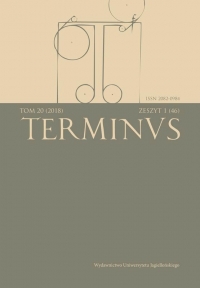Ad ornatum templorum loci Pere erant. Ewakuacja dzieł sztuki z łacińskich kościołów Pery po 1453 roku
Ad ornatum templorum loci Pere erant. Evacuation of the Works of Art from the Latin Churches of Pera aft er 1453
Author(s): Rafał Quirini-PopławskiSubject(s): Cultural history, Social history, 15th Century
Published by: Wydawnictwo Uniwersytetu Jagiellońskiego
Keywords: Pera (Genoese colony); Constantinople; Genoa; Latin churches; Ottoman conquests; icons; reliquaries
Summary/Abstract: Pera—a Genoese colony located on the north shore of the Golden Horn was seized by the Ottoman Turks in 1453, that is at the same time when Constantinople fell. There were numerous Latin churches there at that time, 18 of which we can list by names. Significant parts of two of them have survived, namely of the Dominican church of St. Paul and a Benedictine one. The Genoese almost immediately began to evacuate the elements of the decorations of the Latin churches. This took place usually at the initiative of the families of the original donors and the maintainers of Pera monastic churches. At least partially, it was the result of the papal bull issued by Nicholas V on 8 October 1453, in which the Pope called the clergy and laity, under penalty of excommunication, to save objects and liturgical books from Turkish hands. However, it pointed out that they should return to Pera if the Christians regain control over the colony. One example of such activity was the transfer of items from the church of Santa Chiara in Pera to St. Dominic’s church in Genoa that was carried out in early 1456 by Marietta di Pagana, who came directly from Pera. Another one took place at the same time when descendants of Tommaso Spinola, a wealthy Genoese merchant, donated liturgical vestments to the same church that Tommaso originally founded for the Dominicans in Pera. Dominicans themselves evacuated relics and the most valuable elements of the church equipment to Chios and later to Genoa, while a similar attempt made by the Benedictines failed. In unknown circumstances, however, a much larger number of items from the churches of Pera arrived on the Genoese island of Chios and from there, in early 1461, were transported to Genoa. On 23 January 1461, the Genoese Signoria authorized six officiales from the finest families to carry out a large-scale operation to transfer the items, including many relics and books, to the churches of the metropolis. Th e authorities of Genoa asked Pope Pius II for help in conducting this project. Consequently, more than 20 churches of Genoa received valuable fi ttings. What is particularly important, donations to individual churches needed to be documented in an appropriate detailed inventory, including the estimated value of individual objects. Unfortunately, these documents did not record any information about specific churches from which the items originally came. They enable us to reconstruct the course of this action, and partly characterize the works of art that were brought to Genoa. They thus provide us with partial knowledge about the character of the equipment of the Pera churches. A few of them are still in Genoa. It is worth noting that this transport was preceded by a number of other works of art from the East that reached the Ligurian metropolis even as early as in the 13th century. This action was also one of the major shipments of works of art into the Latin West, which occurred immediately after the fall of the capital of the Eastern Empire in 1453.
Journal: TERMINUS
- Issue Year: 20/2018
- Issue No: 1 (46)
- Page Range: 31-61
- Page Count: 31
- Language: Polish

